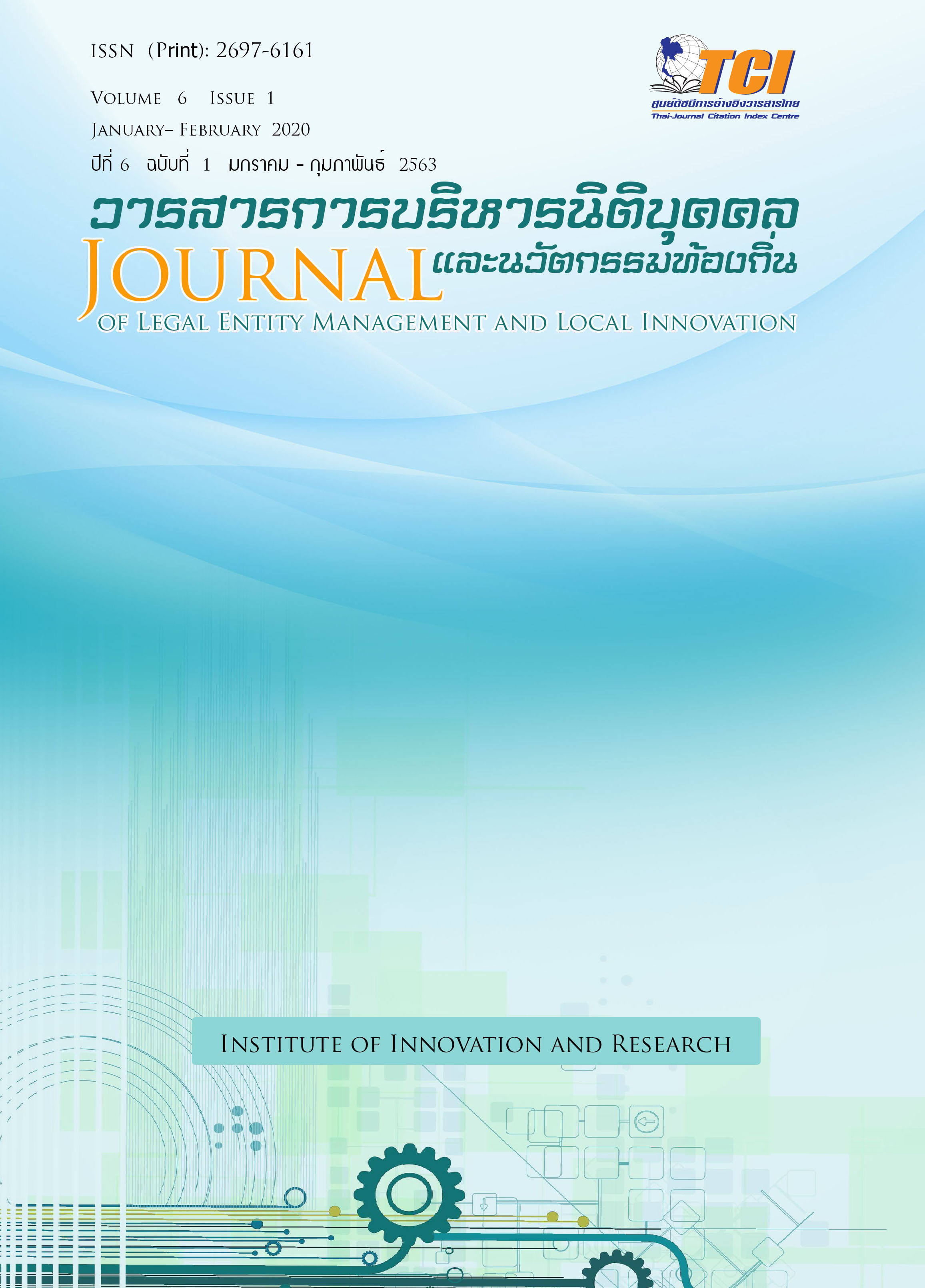Public Participation in Water Resource Management through Reforestation to the Pasak Upstream Nature of Phetchabun
Keywords:
water resource management, reforestation to the upstream nature, participationAbstract
This current study aimed to 1) discovery problems in water resource management in the Pasak basin, 2) determine water resource management of the Pasak Conservation Groups, 3) determine the public participation based Pasak upstream management, 4) examine activities of reforestation to the upstream nature of the villages in Tha Ibun sub-district, and 5) follow up the Pasak upstream management of the villages in Tha Ibun sub-district.
According to stratified sampling, the quantitative study gained the number of 383 as the samples from the people who live in Tha Ibun sub-district, Lomsak district, Phetchabun province. Meanwhile, the qualitative study purposively selected 29 of the stakeholders using water in live in Tha Ibun sub-districtfor interviews and another 60 for group discussion. In addition, the tools included a paper questionnaire, an in-depth interview, and a group discussion; the statistics used to analyze the data comprised frequency, percentage, mean, standard deviation and descriptive analysis.
The results showed the problems in water resource management in the Pasak basin varied as follows: Interest management of water resource in the area leveled moderate; Supports from external agencies leveled low; Irrigation system leveled low; Public relations about the Pasak upstream management leveled moderate. Meanwhile, the public participation based Pasak upstream management varied the following the results: Participation in decision-making was moderate; Participation in water resource management operations was moderate; Beneficiary from water resource management was moderate; Evaluation on water resource management was moderate; Participation in reforestation and forest conservation leveled high; Forest protection was high; Participation in wild animal protection and treatment was high.
The model of the public participation based Pasak upstream management consisted of a board of water resource management from villages, arranging any forms of knowledge and understanding of water and forest resource management, making public relations to persuade people to join water resource management, inculcating the awareness of coexistence between humans and nature, establishing a community learning center of water resource management, cooperating state sector and private sector, and promoting optional careers to the areal people.
The implementation on the activities of reforestation to the upstream nature of the villages showed the villagers were enthusiastic about the reforestation activities, responsible to the assigned duties, and confident to exchange ideas and opinion. Meanwhile, the follow-up of the Pasak upstream management showed the villagers participated in water resource management, the communities realized and relied on forests and water more, the communities willingly established a network and its committees to operate activities, and the communities came across the matter of participation and the awareness of the value of water and forests.
The follow-ups to the Pasak upstream managementand the upstream forest showed the people in the area had been trained on water resource management and forest conservation, they realized how to rely on forest and water resources and also put hands to establish the community network of forest and water lovers to offer solutions to common needs, for doing this a network management committee was set up, and finally the communities had seen the importance of participation and awareness of water and forest values.




